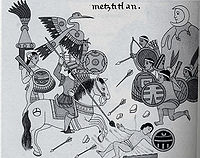
Photo from wikipedia
BACKGROUND Although the Job Content Questionnaire (JCQ-22) has been translated into numerous languages and applied in various countries, its cultural applicability in China remains unclear. OBJECTIVE To adjust the JCQ-22… Click to show full abstract
BACKGROUND Although the Job Content Questionnaire (JCQ-22) has been translated into numerous languages and applied in various countries, its cultural applicability in China remains unclear. OBJECTIVE To adjust the JCQ-22 for cross-cultural use and optimize the scoring method for suitability for Chinese working populations. METHODS We first used the original JCQ-22 questionnaire to measure occupational stress. Cross-cultural adjustment involved reorganization of scale items (adjusted-I scale) and deletion of inefficient redundant items during reorganization of scale items (adjusted-II scale). Structural validity and the relationship between stress and health outcomes (insomnia and self-conscious symptoms) before and after adjustment were compared. RESULTS Exploratory factor analysis revealed that the two-factor cumulative variance contribution rate of job demand and control of the adjusted-II scale was 52.47% , compared with 48.44% and 48.44% in the original version and adjusted-I scale, respectively. Among the 16 fitness indicators in confirmatory factor analysis, 9 items of the adjusted-II scale met the standard, compared with 4 items of the original and adjusted-I scales. The Pearson's correlation coefficients between occupational stress and insomnia as well as self-conscious symptoms from the adjusted-II scale were 0.15 and 0.32, respectively, which were higher than those of the original scale (0.10 and 0.20). Receiver operating characteristic analysis revealed that the adjusted-II scale exhibited a better area under the curve and Youden index values than the original scale. CONCLUSION The adjusted-II scale exhibited superior structural validity with more reasonable health outcome predictions and fewer items, making it more suitable for measuring occupational stress in Chinese populations.
Journal Title: Work
Year Published: 2022
Link to full text (if available)
Share on Social Media: Sign Up to like & get
recommendations!